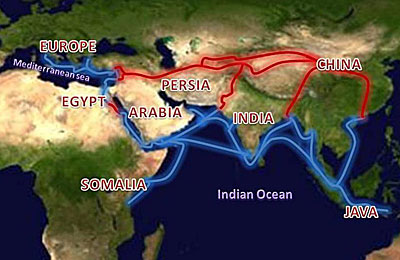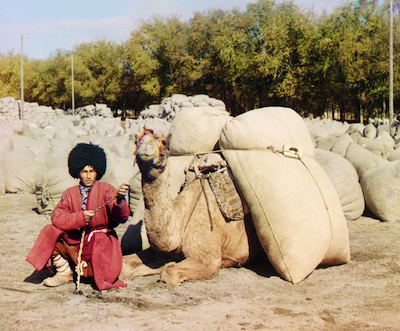
Unit 2: How Trade and Travel Changed the World
Lesson A: Costs and Benefits of Trade
Activity 1: The Role of Trade — History vs. Today
In the following activity, you will think about the movement of people and goods in your own neighborhood. You will see that many similarities exist between the economies of today and trade in the empires discussed later.
The term "trade" is used in history to explain the exchange of goods between people, merchants, and societies. Present day trade takes place between consumers and merchants. In the United States, the government and the buyers and sellers of goods share control of trade. Access to these goods is impacted by the ability to move between homes and markets. This can be done using public or private transportation. Goods can be purchased from stores, or ordered through online websites.
Written Activity - Notebook
Think about the following questions as they relate to trade in your own life. In your notebook, respond to the following questions:
- What goods do you need in order to survive?
- Where do you acquire these goods?
- How do you travel to these locations?
- How do these factors combine to impact your life?
During the 1300-1550 period, trade created contact between the people of Africa, Asia, and Europe. Goods such as gold, silk, and tea, as well as political ideas, were transferred along trade routes. Leaders used religion and the benefits of interregional trade to control empires. Land-based empires of Afro Eurasia traded goods along routes such as the Silk Road and Trans-Saharan network. The Ottoman Empire included land in the Middle East, North Africa, and Southeastern Europe. The Songhai controlled much of western Africa, while the Ming Dynasty in China controlled East Asia. Finally, the Mughals controlled the Indian lands of south Asia. Movement of people within and outside of these empires increased the availability of goods.

Land-based Trade Routes [1]

Overland Traders in Asia Traveled from Markets for Goods Using Means Best
Suited for the Environment. Here, a Turkman of Central Asia Rests Alongside
a Camel Hauling Grain or Cotton. [2]
Page Notes:
[1] Source: This image from http://en.wikipedia.org/wiki/File:Silk_route.jpg is in the public domain.
[2] Source: This image from http://en.wikipedia.org/wiki/File:Turkmen_man_with_camel.jpg is in the public domain.

